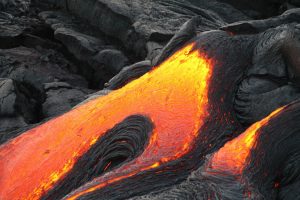By Dr Helen Dacre and Dr Andrew Prata, Department of Meteorology, University of Reading

The volcanic ash being spewed out by Mount Agung in Bali has brought back memories of the 2010 eruption in Iceland, which caused chaos for holidaymakers in Europe. Airlines operating flights to and from Bali and its neighbouring Indonesian islands have again been hit this week, however research is being carried out to reduce the impact of eruptions in the future.
Mount Agung had been showing signs of increased seismic activity since mid-September, but last Tuesday it moved into a new phase and began releasing steam and volcanic ash into the atmosphere. Denpasar International Airport in Bali has reported ash at ground level accumulating on aircraft and satellite images show glimpses of an ash-rich plume, but it is often obscured by meteorological clouds.
Due to the damaging effect of volcanic ash on jet engines – molten ash blocks engine cooling holes causing engines to overheat and shutdown – air travel is restricted in ash contaminated airspace. A prolonged eruption, such as the 2010 Eyjafjallajokull eruption in Iceland that grounded flights across Europe, will lead to inevitable economic damage to Bali and the surrounding area due to lost tourism and productivity.
The 2010 ash crisis exposed the fragility of air travel and raised questions about the resilience and vulnerability of the world’s critical airspace infrastructure. Since 2010, work in the understanding of ash damage to aircraft has developed rapidly. In particular, engine manufacturers are now in a much better position to advise on the levels of ash that their engines can safely tolerate.
New research will aid decision-making
In a report published in July 2016, Rolls Royce (the UK’s largest engine manufacturer) outlined new engine susceptibility guidelines, which describe engine tolerance limits in terms of a dosage (i.e accumulated concentration over time). These guidelines are based on the latest field studies carried out on aircraft engines.
At the University of Reading we are working with Rolls Royce, British Airways and the Civil Aviation Authority (CAA) to develop a tool that is able to calculate the ash dosage encountered by an aircraft along its flight path, and its associated uncertainty, for the first time.
The tool demonstrates a method by which airline operators can calculate ash dosage along time-optimal flight routes during volcanic eruptions. This tool also includes uncertainty information, which will encourage the use of uncertain information in operational decision-making procedures.
The new knowledge developed in the project will be used by the CAA to support strategic decision-making, and will enable new regulations to be developed that are based on the latest understanding of volcanic ash risk to aircraft engines, resulting in a more resilient UK airspace infrastructure.
